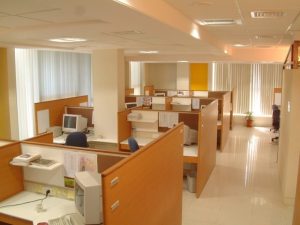Global real estate firm highlights labour shortages and supply chain disruptions as main factors for the increased costs in fitting out offices
Organisations should expect to pay more for fitting out offices and to redesign or upgrade their workspaces in 2021, even while many are trying to decrease capital expenditure (capex) due to the financial impact of the pandemic, according to a report by real estate consultancy JLL.

The firm’s Asia Pacific Fit-Out Cost Guide 2020/2021 reveals that the average cost for fitting out offices rose 4.7% year-on-year across the region, with labour shortages, health and safety considerations, material availability, and higher delivery costs as the main price drivers.
Martin Hinge, Executive Managing Director, Project Development Services, JLL Asia Pacific, explains: “Cities that rely heavily on foreign labour have struggled with labour shortages, and governments have imposed stringent measures, including enhanced inspection routines and enforced health and safety protocols, for construction sites to reopen. These are important and necessary precautions. However, the impact on productivity and extended project timelines are driving costs up.”
Employers remain committed to reimagine workspaces
Despite overall rising costs in fitting out offices, JLL believes this will not deter most companies from investing in safe and productive work environments for their employees. The firm reveals that while organisations may be re-examining their real estate footprint, workspaces still play an integral role in preserving a company’s corporate culture, as well as to recruit and retain talent.
“Working practices have been disrupted like never before and many organisations are now reviewing their portfolios to mitigate the financial impact of the pandemic on their business. As people start returning to work, many are modifying their offices to accommodate de-densification measures and incorporating more technologies to facilitate both in-office collaboration and remote working,” adds Hinge.
“Employee expectations, along with the sudden change in working habits, require companies to consider how spaces can be used to boost productivity and efficiency. In many ways, employees have become consumers of the work place and make choices about where and how they work, so I believe investing in a flexible environment pays back in terms of employee engagement.”
Costs vary throughout region
Precipitated by the ongoing construction boom and labour shortage, Tokyo ranks as the most expensive office market for fitting out offices at US$179 per sq ft for the fourth consecutive year, compared to the regional average of US$93.
Elsewhere, price increments are expected in Brisbane, Singapore, Beijing, Shanghai, Guangzhou and most Indian cities in 2021, as constraints like access to labour, reliance on imported materials and delayed completion dates continue to pose challenges.
Meanwhile, Auckland, Bangkok, Manila, Seoul and Taipei may see fit-out costs stabilizing or even dipping slightly, as many construction service providers and contractors have resorted to reducing overall margins. “Though fit-out costs vary from market to market around the region, we believe the overall upward trend will likely remain in 2021. Workplaces will continue evolving, and there remains a strong motivation for companies to invest in areas such as technology, health and wellness, to meet increased expectations from employees, as we all adjust to the new normal.”
A recent research said office rents are expected to improve in the second half of 2021, resulting in an overall positive rental growth for the whole of 2021.
This is on the back of Ministry of Trade and Industry’s projection that the Singapore economy will grow by 4% to 6% in 2021. Nonetheless, office demand is expected to remain relatively subdued in 1H 2021, as firms will still remain cautious in the wake of the COVID-19 pandemic. Should economic activity and business sentiment recover after the administration of the vaccine by Q3 2021, the office market is well poised to benefit from the gains in employment.
Five new projects are estimated to complete in 2021, which will add another 1.23 million square feet to the entire office stock. Out of these five, there is only one Grade A office development – CapitaSpring, which will add another 0.65 million square feet of office stock to the Grade A (Core CBD) market.
Mr Desmond Sim, Head of Research, Singapore and Southeast Asia, CBRE, says, “Leasing activity is improving, as we understand that there are currently more ongoing negotiations for CapitaSpring which is slated to complete next year. The initial office supply pressure for 2022 has been dissipated due to construction delays, but which augured well for the office market as it provided more time for pre-leasing activities. The future supply that will spread over a longer time horizon allows demand and supply dynamics to recalibrate.”
Although there is a limited supply of new Grade A developments in the pipeline, CBRE Research expects that Grade A (Core CBD) occupancy will face further downward pressure in the early stages of 2021.
Chinese technology and non-bank financial services firms to fuel demand in 2021
Given Singapore’s political-neutral position and its introduction of new initiatives in terms of policy and tax structures, more Chinese technology firms are displaying strong appetite for expansion within the city.
Office demand in 2021 will also be fueled by non-bank financial services firms such as investment managers and hedge funds. To enforce Singapore’s position as a hub for investment funds, the Monetary Authority of Singapore launched the Variable Capital Companies framework in January 2020.
Through 2020, there was an increase in vacant stock as firms reduced their footprint upon renewal or relocation. A diverse range of industries, namely financial, insurance and technology, also contributed to the looming secondary space in the market.






